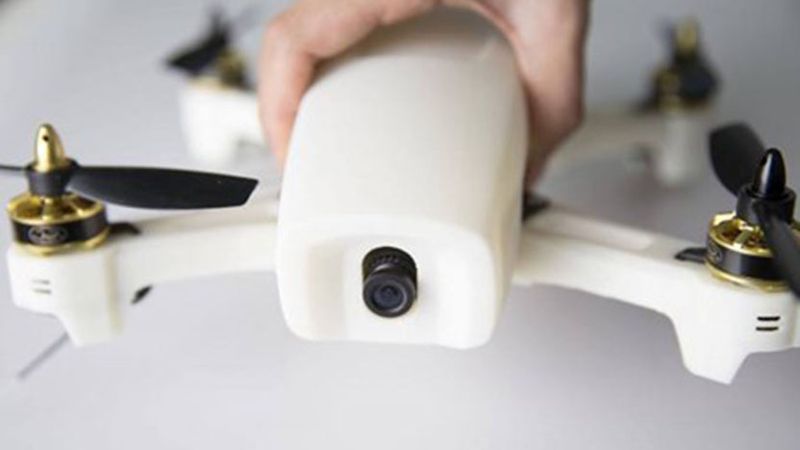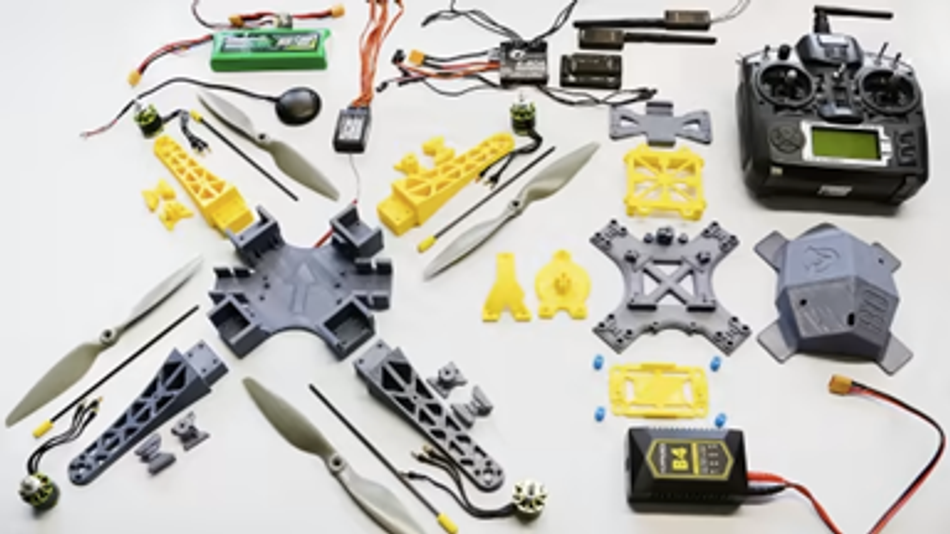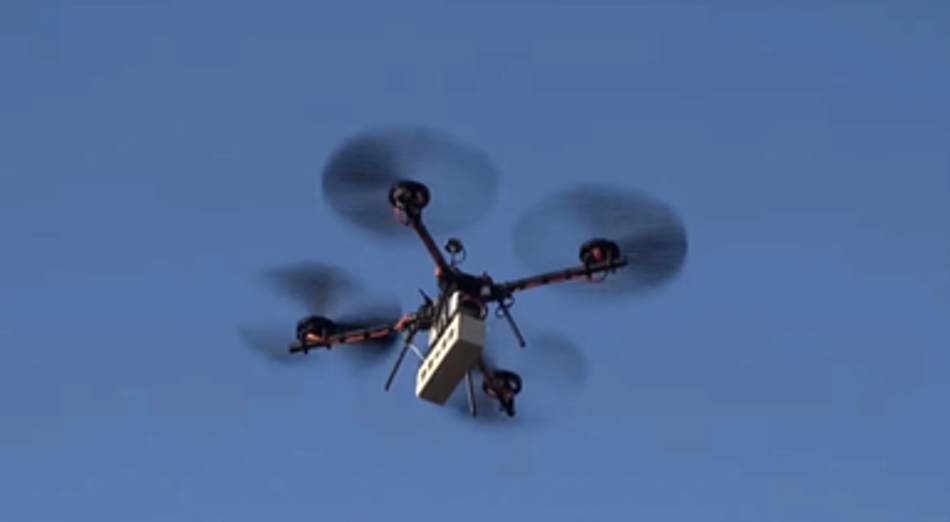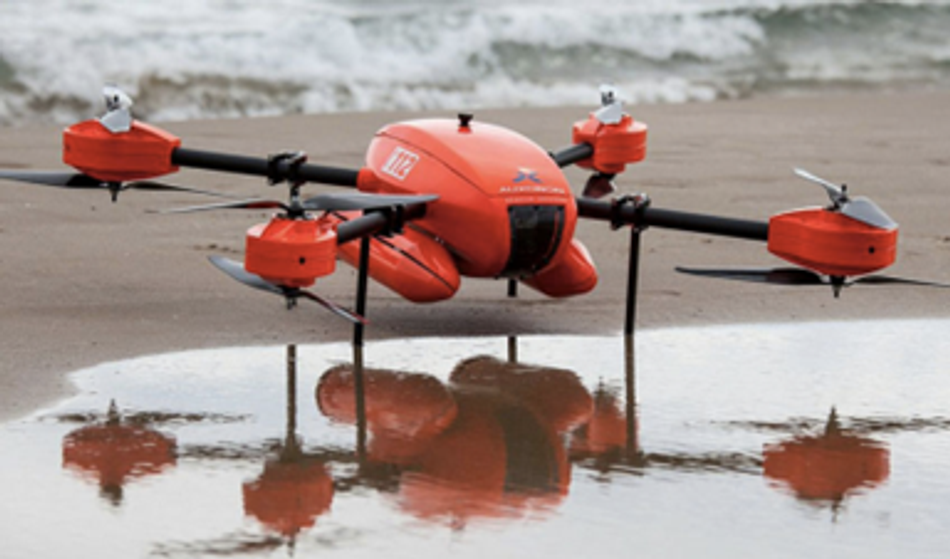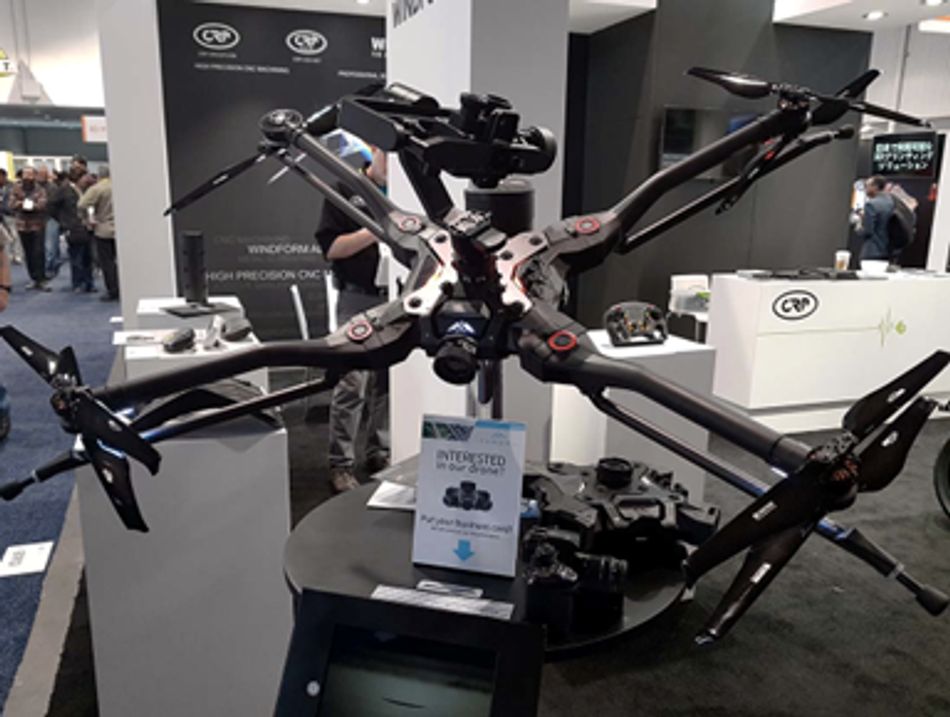The Benefits of Additive Manufacturing for Drones
3D printing offers drone makers an agile and low-cost method of manufacturing.
Drones, also known as Unmanned Aerial Vehicles (UAV), are being used in a wider and wider range of applications. These include surveillance, delivery, defense, and aerial photography. In recent years, several industry-specific applications of drones have also emerged, such as the use of drones in the construction industry for security and mapping. The drone sector has been predicted to expand at a compound annual growth rate (CAGR) of 22.8% from 2021 to 2028 (1). In this article, we explore the use of 3D printing in manufacturing drones.
Drone Design Basics
Structurally, all drones are composed of an airframe, one or more motors, propellers, and flight controllers. They are typically classified based on the number and type of propellers. Multi-rotor drones (tri-copters, quad-copters, hexa-copters, octo-copters) are by far the most common, although fixed-wing and single-rotor drones are also available for specific applications, such as long-range mapping and LASER scanning.
With such a wide range of applications, requiring highly-tailored design, low cost, and fast manufacturing speeds, additive manufacturing has emerged as a promising strategy for drone construction. Compared to traditional manufacturing approaches, 3D printing of drones offers several key advantages, high customization being the most obvious. In addition, given the exceptional performance required in drone airframes, propellers, and landing gears, 3D-printed components may be easily replaced. This introduces circularity in drone technology, contributing to lower waste and increased sustainability.
Manufacturing 3D-printed Drones
Several components of drones can benefit from additive manufacturing (2). Airframes, which make up the main structure of the drone and provide support for all other components, should combine high strength and rigidity with low weight to reduce energy use and increase the drone’s flight time. In this context, 3D printing can provide complex airframe designs that reduce weight while maintaining high aerodynamic and structural performance, thanks to topology optimization.
Drone landing gears need to be tailored to specific applications in order to provide a safe and smooth landing process. This is especially important with delivery drones with varying payload capacities. Effective landing gears should provide excellent shock absorption and be adaptable to different terrain types. Because of this, ideally, landing gears should be easy to disassemble and replace, depending on the operating conditions of the drone. In this context, 3D printing (Figure 1) can easily provide a solution, enabling drone manufacturers to replace old or easily damaged landing components cheaply and quickly.
Propeller blades provide the power required for the operation of the drone by enabling it to move up and forward. Because of the high centrifugal loading and low density required by propellers, these components are typically manufactured in carbon fiber-based composite materials. Composites provide significant noise and vibration reduction, higher tensile strength, and lower weight compared to conventional plastics. For this reason, until recently, 3D-printed propellers have been limited to prototypes and “do it yourself” designs. However, with advancements in composite 3D printing, new strategies for 3D-printed propellers are emerging. The Ultra-Quiet UAV propellers designed by Delson Aeronautics (Figure 2) are one groundbreaking example (3). In addition to the propellers themselves, propeller guards, which protect the blades from damage and improve aerodynamic performance, have complex geometries that may be easily 3D printed.
Among the most common materials for 3D printing in drones, thermoplastics such as nylon and thermoplastic polyurethane (TPU) are inexpensive and combine low density and strength. TPU is also capable of absorbing vibrations and energy upon impact, providing durability and improving the quality of drone-recorded footage (4). Carbon fiber-filled thermoplastics, such as nylon and polyetheretherketone (PEEK), are the most cutting-edge materials available for 3D printing in drone manufacturing today. They are ideal for structural and high-strain applications such as propeller blades and airframes. You should note that, in addition to their outstanding mechanical properties and low densities, these materials can also be easily recycled.
Advantages of Additive Manufacturing for Drone Technology
Traditionally, drone components are manufactured by a combination of approaches such as injection molding and Computer Numerical Control (CNC) machining. While these approaches are efficient in their own right, they are often time-consuming, expensive, and labor-intensive processes. Furthermore, these approaches are often limited in the range of materials and make customization nearly impossibile.
Additive manufacturing provides virtually infinite design freedom, allowing full customization of drone components. The transformation of a load-carrying drone into a surveillance drone, for instance, may be achieved by simply printing and adding new attachments. Since the components can be cheaply and quickly iterated, time for testing and optimization is greatly reduced. Because drones are designed to travel long distances, carry loads, and work in different weather conditions, they frequently undergo structural damage. Being able to easily replace damaged drone parts makes additive manufacturing superior and more sustainable compared to other manufacturing approaches (2).
Applications for 3D-printed drones
The first fully 3D-printed drone was designed in 2015 (5). Since then, additive manufacturing has achieved widespread popularity for the design of drones for an ever-expanding range of applications.
Delivery is one of the most challenging applications for drone technology due to the need to carry heavy weights and combine precise control of landing and take-off with fast movement speed. The fully 3D-printed delivery drone CargoCopter, for instance, is a hybrid multi-rotor drone with the addition of a fixed-wing airframe. This drone has taken full advantage of the design flexibility offered by 3D printing. It can carry up to 5kg of payload, flying for over 60km at 100km/h speed (6).
Drones can find applications for rescue missions in life-threatening situations. The Auxdrone Lifeguard by GeneralDrones (Figure 3) is a 3D-printed octo-copter designed to carry two self-inflating lifejackets to prevent drowning in coastal areas with difficult access. It is fully waterproof and can fly in adverse weather conditions. The airframe, the legs, and the propeller guards of the drone have all been 3D-printed, achieving high resistance to sun, humidity, and corrosion. Starting in 2018, the Auxdrone Lifeguard has already been successfully employed for coastal security on the beaches of Port de Sagunt and Palma de Mallorca (7).
One of the most successful examples of mass-produced 3D-printed drones is the Tundra-M Drone by Hexadrone (Figure 4). It is a modular drone with easily detachable arms that has been designed to be inherently multi-functional. One of the most interesting aspects of this drone is the choice of materials. The entire drone is printed with carbon fiber-reinforced polyamide, which provides an exceptional combination of tensile strength, wear resistance, and low weight. The additive manufacturing process allows fast iteration, outperforming the traditional injection molding processes (8).
Conclusion
Overall, these examples show how 3D printing enables new drone technology applications while making manufacturing processes more flexible, efficient, and sustainable.
About the sponsor: Mouser Electronics
Mouser Electronics is a worldwide leading authorized distributor of semiconductors and electronic components for over 1,100 manufacturer brands. They specialize in the rapid introduction of new products and technologies for design engineers and buyers. Their extensive product offering includes semiconductors, interconnects, passives, and electromechanical components.

References
1. Grand View Research. Drone Analytics Market Size, Share & Trends Analysis Report by End-use (Power & Utility, Construction & Infrastructure), By Application, By Deployment (On-premise, On-demand), By Region, And Segment Forecasts, 2021 - 2028. Grand View Research [Internet]. Available from: https://www.grandviewresearch.com/industry-analysis/drone-analytics-market-report
2. Maunica Kolla. 3D Printed Drones . Future of Drone fabrication. Fabheads [Internet]. 2021 Apr 22. Available from: https://fabheads.com/blogs/3d-printed-drones-future-of-drone-fabrication/
3. Jessica Miley. Ultraquiet UAV Blades win the KyronMax Challenge. Wevolver [Internet]. 2021 Apr 07. Available from: https://www.wevolver.com/article/ultraquiet-uav-blades-win-the-kyronmax-challenge
4. Rob Davey. 3D Printing Drones. How to Get Started. All3DP [Internet]. 2022 Feb 12. Available from: https://all3dp.com/2/3d-printed-drone-parts/
5. Danielle Muoio. The World’s First 3D-Printed Drone Reaches 150 Miles Per Hour. Business Insider [Internet]. 2015 Nov 12. Available from: https://www.businessinsider.com/the-worlds-first-3d-printed-unmanned-jet-reaches-150-miles-per-hour-2015-11?r=US&IR=T
6. Corey Clarke. 3D Printed CargoCopter Intends to be the Future of Drone Delivery. 3D Printing Industry [Internet]. 2017 Jun 08. Available from: https://3dprintingindustry.com/news/3d-printed-cargocopter-intends-future-drone-delivery-115276/
7. Haye Kesteloo. Auxdrone Lifeguard Drone Assists in the Rescue of Three People in Puerto de Sagunto, Spain. DroneDJ [Internet]. 2018 Aug 17. Available from: https://dronedj.com/2018/08/17/auxdrone-lifeguard-drone-assists-in-the-rescue-of-three-people-in-puerto-de-sagunto-spain/
8. Sarah Saunders. Tundra-M Drone Prototype Flies High Thanks to CRP Technology’s 3D Printing and Windform Materials. 3DPrint.com [Internet]. 2018 May 16. Available from: https://3dprint.com/213639/case-study-tundra-m-drone-crp/

